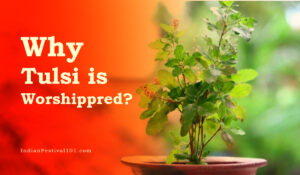Navratri, one of India’s most vibrant and auspicious festivals, is celebrated with great enthusiasm and fervor. A significant aspect of Navratri festivities is the traditional dance form known as Garba. In this article, we will explore the profound importance of Navratri Garba in Indian culture, festivals, and traditions. Join us on this journey as we dive into the heartwarming and lively world of Garba, a celebration that transcends generations.
Our socio-cultural life is enriched by festivals and cultural events in which we mingle with each other and celebrate together. Navratri is one of the most popular festivals in Gujarat and is called the longest dance festival in the world. During festival nights special arrangement is made for the Garba dance celebration at different places in Gujarat. The celebration is so renowned that catches the attention from all across the country and the World. Not only in India but people from different countries participate in the Garba dance every year.
What is Garba?
Garba is a traditional dance form that originates from the state of Gujarat in India. It is typically performed during the Navaratri festival, a Hindu celebration that spans nine nights and is dedicated to the goddess Durga. The dance is characterized by its energetic and rhythmic movements, colorful attire, and vibrant music.
As the festival season started, how much we were excited about the celebration. Everyone prepares themselves to make the festival memorable. Whether you are a child or adult, whether you are a customer or a businessman everyone has a plan for festival season. Children plan to get new clothes, sweets, etc. Businessmen and merchants see festivals as they do a lot of business during festival season in India.
Navratri Garba: A Dance of Joy and Unity
Navratri Garba is a dance form that has its roots in Gujarat, but it has gained immense popularity and significance throughout India. Here’s why Navratri Garba is so important in Indian culture and traditions:
Traditional Attire:
Participants wear colorful and elaborate traditional attire. Women typically wear chaniya cholis (blouse, skirt, and dupatta) while men wear kediyu and dhoti.
Circular Formations:
Garba is performed in circular formations around a central point, usually an idol or an image of the goddess Durga. Participants move in a circular pattern, clapping their hands and dancing in sync with the beats of the music.
Dandiya Raas:
Another form of Garba is called “Dandiya Raas.” In this style, participants use wooden sticks called dandiyas while dancing. The dancers strike their dandiyas together in rhythmic patterns, adding an extra layer of complexity and excitement to the dance.
Live Music:
Traditional folk music accompanies the Garba dance. Instruments like the dhol, tabla, and traditional string instruments are commonly used to create lively and rhythmic melodies.
Celebratory Atmosphere:
The Garba dance festival creates a festive and celebratory atmosphere. People of all ages and backgrounds come together to dance, socialize, and enjoy the festivities.
Navratri Garba is not limited to any specific community or group. People from all walks of life, regardless of their cultural background, participate in the dance, making it a truly inclusive celebration.
Community Participation:
Garba brings communities together, fostering a sense of unity and belonging. It’s a time when people connect with their cultural roots and celebrate their traditions.
Spirit of Navratri:
The Garba dance embodies the essence of Navratri, which is the victory of good over evil. The dance symbolizes the triumph of light and positivity over darkness.
Garba is closely associated with the Navaratri festival, which is a nine-night celebration dedicated to different forms of the goddess Durga. Each night represents a different aspect of the goddess, and Garba is performed as a way to honor her and seek her blessings.
Evolution and Modernization:
While Garba has deep traditional roots, it has also evolved over time. Modern versions may incorporate contemporary music, dance moves, and fusion elements while still retaining the core essence of the dance.
Celebration of Femininity:
Garba is often seen as a celebration of the divine feminine energy, represented by the Goddess Durga. The circular dance movements of Garba symbolize the cyclical nature of life, birth, and rebirth.
Unity and Togetherness:
Garba is a group dance that brings people together, transcending age, gender, and social boundaries. In the circle of the dance, all participants are equal, and the sense of unity is palpable.
Cultural Heritage:
Navratri Garba is a reflection of India’s rich cultural diversity. It is an art form that combines various elements, including music, dance, traditional attire, and intricate footwork.
The Garba dance festival is not only a cultural event but also a reflection of the vibrant spirit of Gujarat and Indian culture. It has gained popularity beyond India’s borders and is celebrated in various parts of the world where Indian communities reside.
Conclusion
Navratri Garba is more than just a dance; it’s a reflection of the rich and diverse tapestry of Indian culture and traditions. It embodies the spirit of unity, festivity, and the triumph of good over evil that is at the core of Indian festivals. As you twirl to the rhythmic beats and embrace the vibrant colors of Garba, remember that you are part of a celebration that bridges generations, unites communities, and honors the divine feminine energy, making it a cherished tradition that continues to thrive in India’s cultural landscape.
Also Read-
Maa Shailputri- First Day of Navratri



